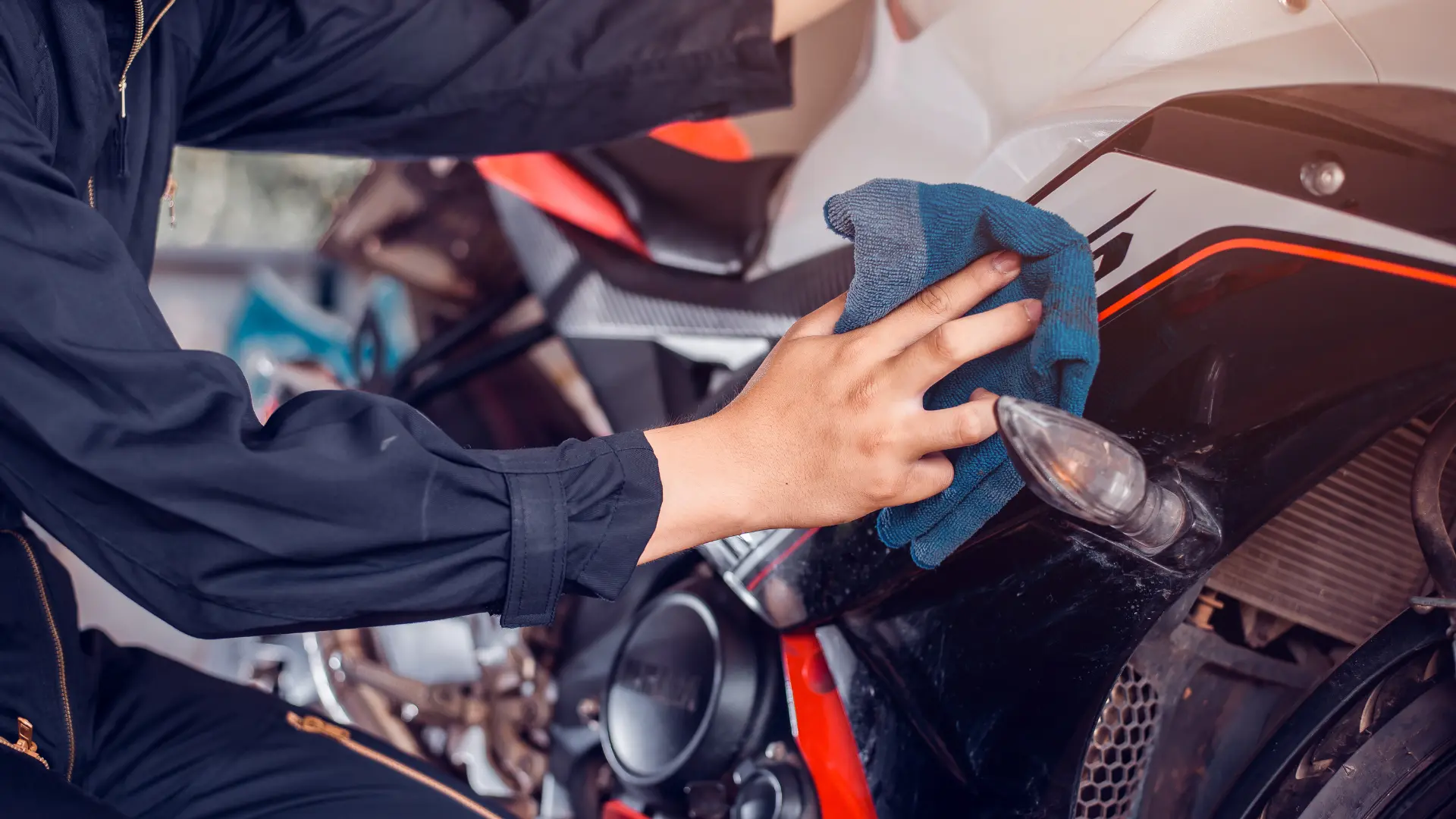As summer fades and leaves begin to change, motorcycle enthusiasts face a bittersweet reality: storing their beloved bikes for the winter. But fear not, riders! With proper preparation, your motorcycle can slumber peacefully through the cold months and emerge ready to hit the road come spring. Here’s a comprehensive guide to prepping your motorcycle for winter storage:
Prepping Motorcycle for Winter
1. Give Your Motorcycle a Deep Clean:
Dirt, grime, and road salt can wreak havoc on your motorcycle’s finish during storage. Wash your bike thoroughly with a gentle motorcycle soap and a soft sponge. Pay particular attention to areas that collect dirt, like the chain, wheels, and undercarriage. Once clean, dry your motorcycle completely with a microfiber cloth to prevent rust. A clean bike is not only aesthetically pleasing, but it also allows you to inspect for any underlying damage or leaks more easily before storing it away.
2. Freshen Up the Engine Oil:
Old oil accumulates contaminants that can harm your engine during storage. Change the oil and filter with fresh, high-quality oil suitable for colder temperatures. Refer to your owner’s manual for the recommended oil type and viscosity. Fresh oil acts like a protective coating on your engine’s internal components, reducing the risk of corrosion and ensuring smooth operation when you start the bike up again in spring.
3. Fill Up the Tank (with a Twist):
A half-empty tank can create condensation within, leading to rust. Fill the tank close to the brim with fresh fuel. However, don’t just use any gas. Add a fuel stabilizer to prevent the gasoline from degrading during storage. This will keep your engine happy and ready to fire up come spring. A full tank with stabilizer minimizes air space within the tank, reducing the chance of moisture build-up and rust.
4. Tend to the Battery:
A dead battery can put a damper on your spring riding plans. Here are two options:
Removal: Remove the battery completely from the motorcycle. Store it in a cool, dry place indoors and connect it to a battery tender to maintain a healthy charge throughout winter.
Hibernation: If you don’t have a battery tender, you can leave the battery on the motorcycle. But make sure to disconnect the negative terminal to prevent any parasitic drain. However, this method is riskier, and the battery may lose its charge over time, especially in very cold climates.
5. Keep Tires Inflated and Consider Stands:
Proper tire pressure is crucial throughout the year, and winter storage is no exception. Inflate your tires to the recommended PSI as indicated in your owner’s manual. This will help maintain their shape and prevent flat spots from developing during extended periods without weight.
Bonus Tip: Consider using motorcycle stands to take the weight off the tires and suspension during storage. This can further help prevent flat spots and stress on the suspension components. Stands come in different varieties, such as paddock stands that lift the rear wheel or centerstands that support the entire motorcycle. Choose the type that best suits your motorcycle and storage situation.
6. Chain Care:
Clean and lubricate your chain with a high-quality chain lube specifically designed for winter storage. This will prevent rust and ensure smooth operation when you’re back on the road. A clean and lubricated chain minimizes wear and tear during storage and extends its lifespan.
7. Cover Up:
Invest in a high-quality, breathable motorcycle cover to protect your bike from dust, moisture, and potential critters. Avoid using plastic tarps, as they can trap moisture and cause rust. A good motorcycle cover should be weatherproof, allowing for air circulation to prevent condensation buildup underneath.
8. Fogging the Engine:
For added protection, consider fogging the engine with fogging oil according to your motorcycle’s manual. This involves introducing a small amount of oil mist into the engine crankcase through the intake valve. The oil coats the internal components, creating a protective barrier against moisture and corrosion during storage.
9. Lubricate Moving Parts:
Give all moving parts, such as cable levers, swingarm bearings, and clutch and brake levers, a light coating of a multi-purpose lubricant to prevent rust and ensure smooth operation when you start riding again.
By following these steps, your motorcycle will be ready to hit the road again come spring! You’ll have the peace of mind of knowing it’s been properly stored and protected from the harsh winter elements. Take this opportunity to plan your spring rides, research new destinations, and get yourself excited for the upcoming riding season. Spring will be here before you know it, and your trusty motorcycle will be ready to roll with you on your next adventure.

